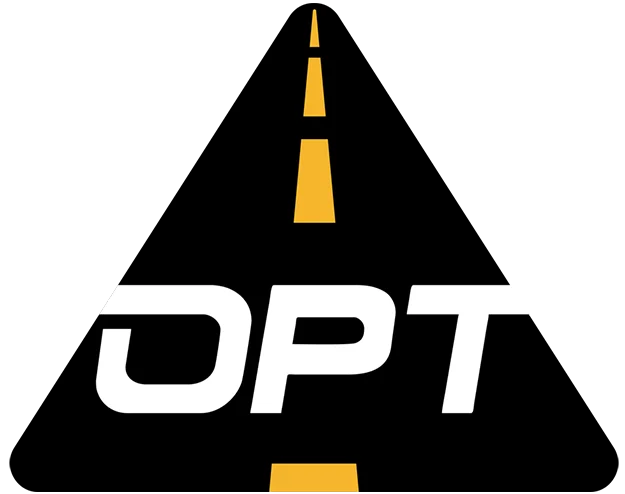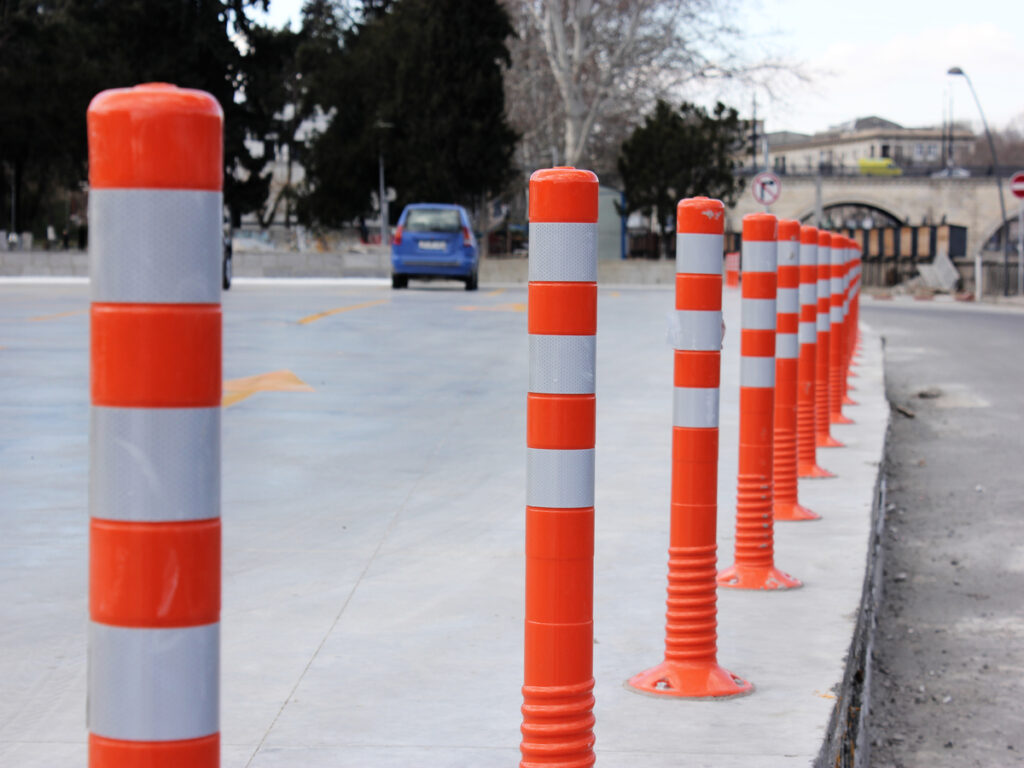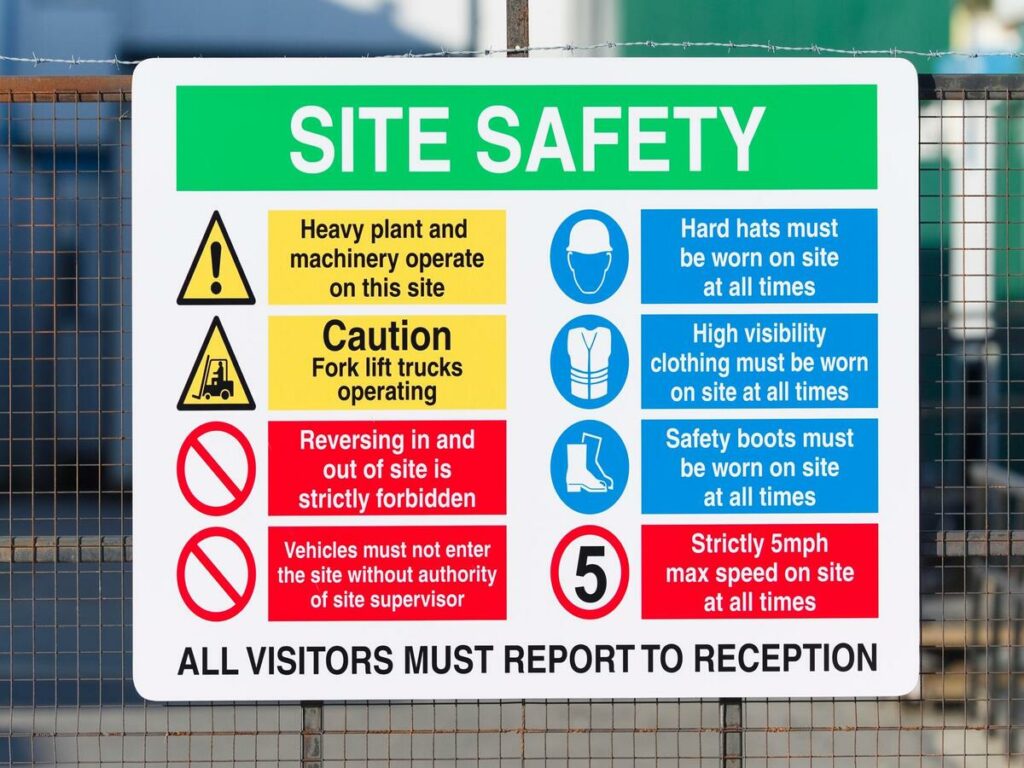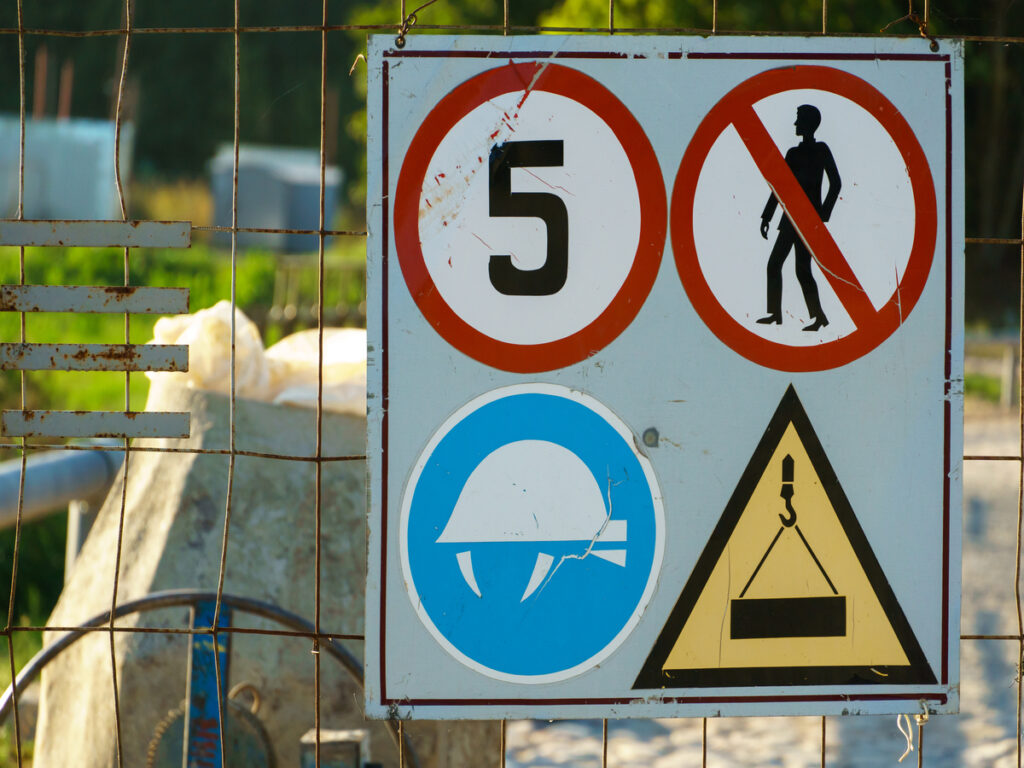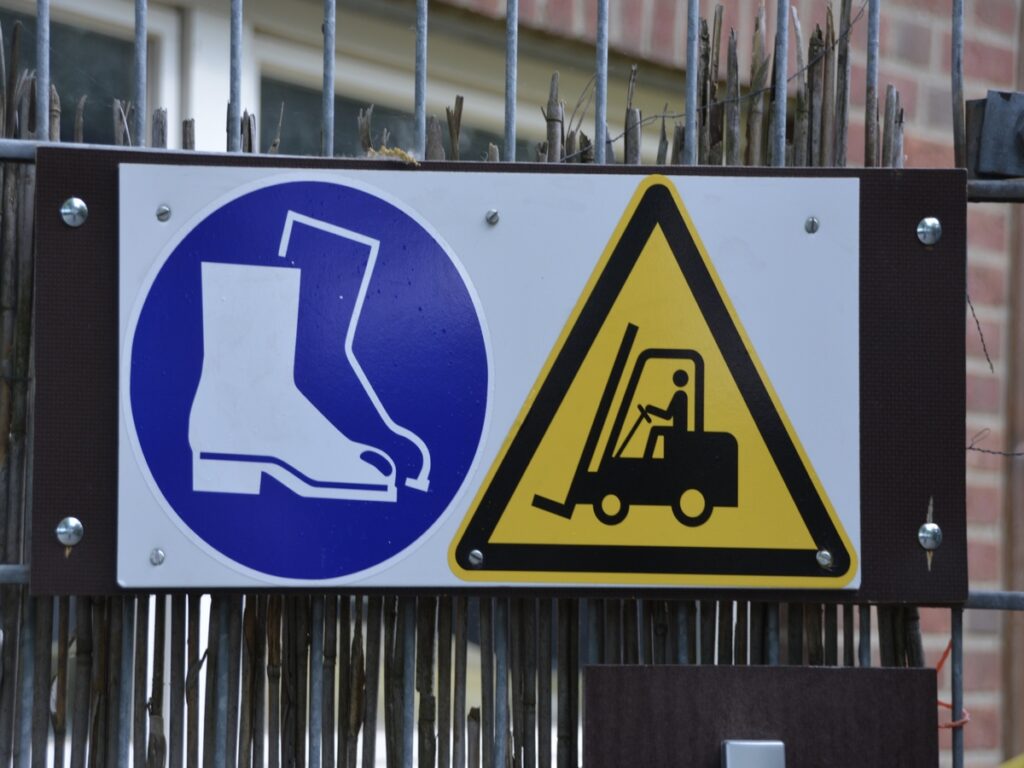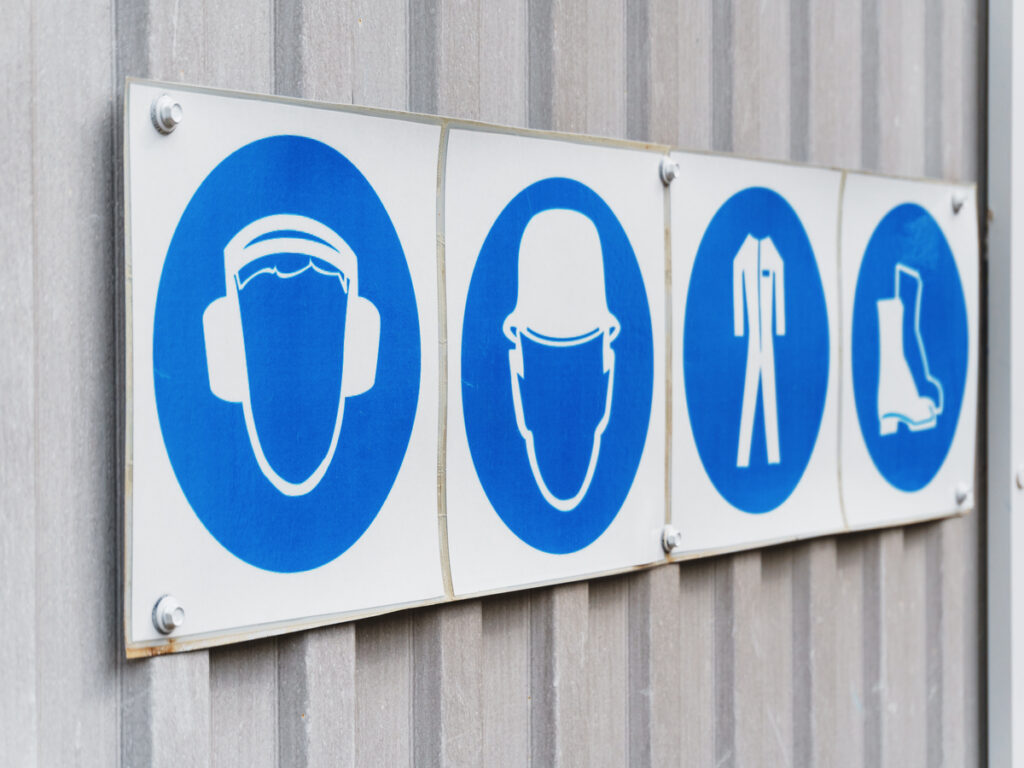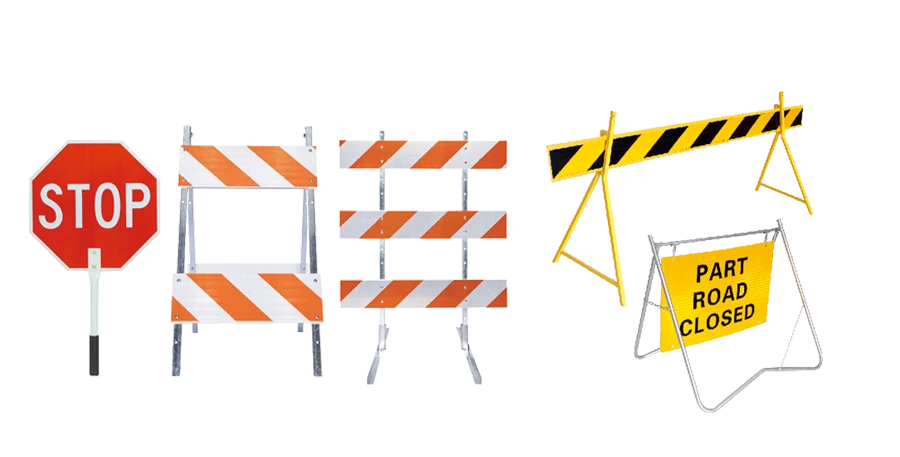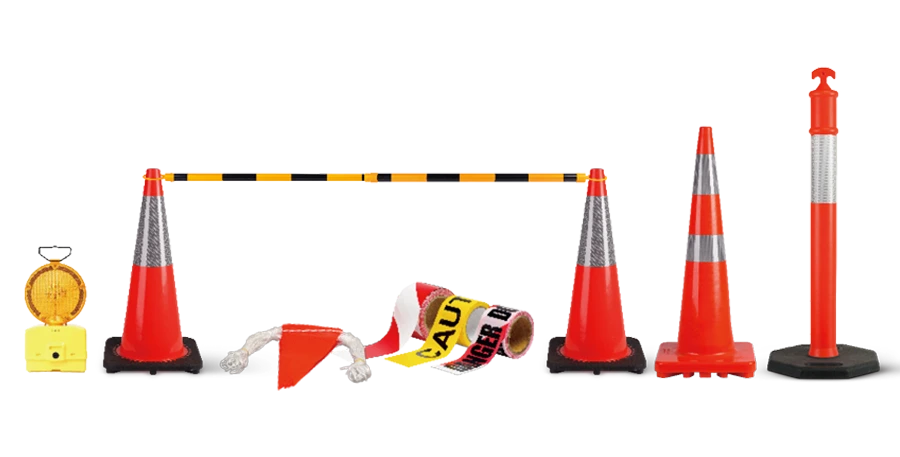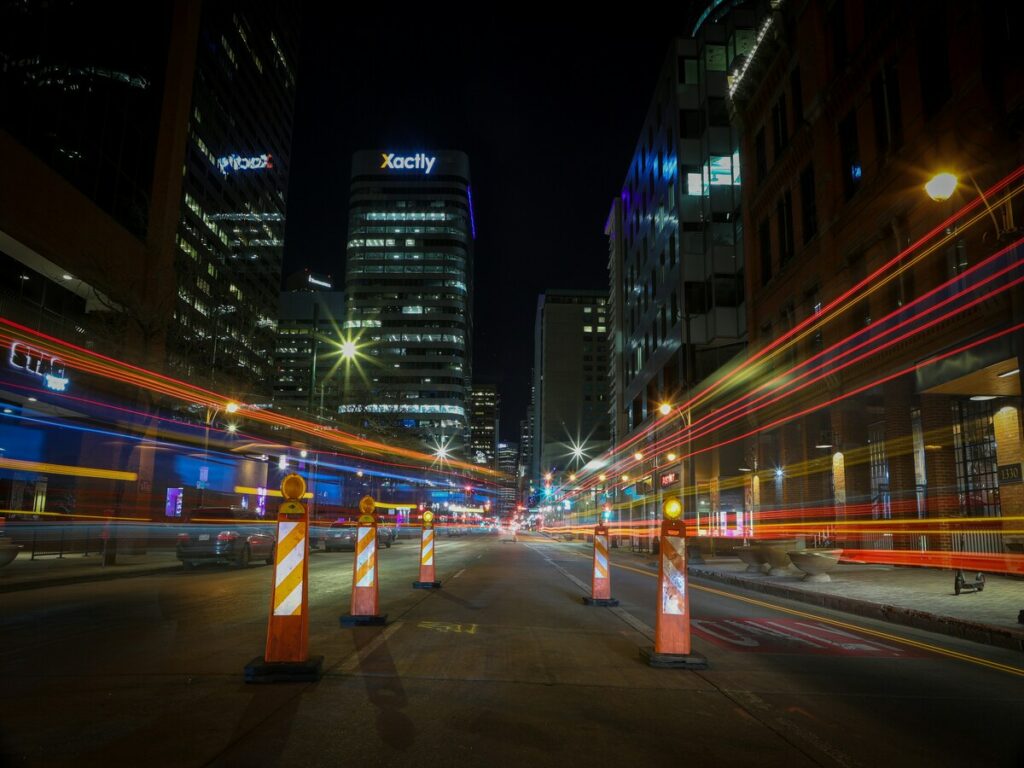
Sie begegnen täglich Road -Poller und Größen, aber ihre Zwecke unterscheiden sich signifikant. Pollards wirken als robuste Barrieren, Oft in Fußgängerzonen platziert, um den Zugang zum Fahrzeug zu blockieren und die Verkehrssicherheit zu verbessern. Im Gegensatz, Die Größenleiter führen den Verkehr mit ihrem flexiblen Design leiten, häufig markieren Fahrspuren oder Kurven auf Autobahnen. Diese Geräte bieten einzigartige Rollen. Zum Beispiel, Die Größen sorgen für eine sichere Navigation in Bereichen, die zu Unfällen neigen, Während Poller Fußgänger und Radfahrer schützen, indem sie Fahrzeuge einschränken. Wenn Sie diese Unterscheidungen verstehen, können Sie die richtige Lösung für Verkehrskontrolle und Sicherheit auswählen.
Road -Poller und -Linineatoren: Definitionen und wichtige Unterschiede
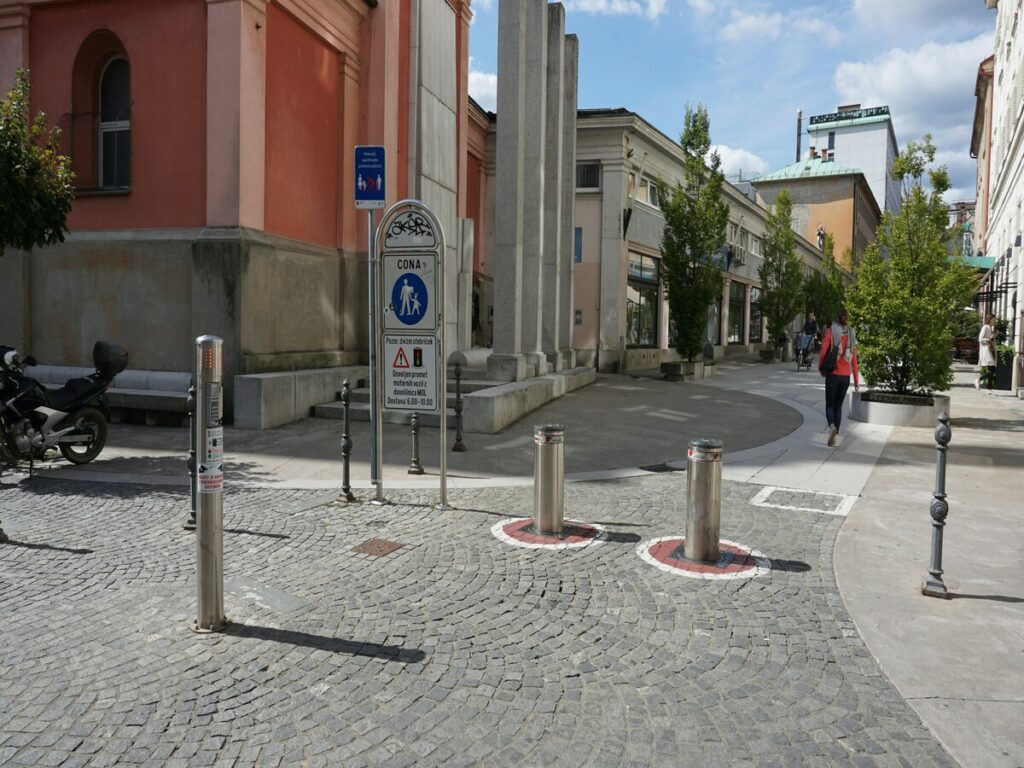
Was ist ein Straßenbolletarte?
Ein Straßenboller ist ein robuster, Vertikaler Beitrag zur Steuerung des Fahrzeugzugriffs und zur Verbesserung der Sicherheit. Sie sehen oft Poller in Bereichen, in denen Fahrzeuge eingeschränkt werden müssen, wie Fußgängerzonen, Parkplätze, oder in der Nähe von Gebäudeneingängen. Diese Beiträge fungieren als physische Hindernisse, Verhindern, dass Fahrzeuge nicht autorisierte Räume betreten. Pollards schützen auch sensible Bereiche wie Ladenfronten oder öffentliche Räume vor zufälligen oder absichtlichen Abstürzen. Ihre starre Struktur sorgt für die Haltbarkeit, sie ideal für hochwirksame Anwendungen machen. Einige Poller sind dauerhaft fixiert, während andere abnehmbar oder einziehbar sein können, Flexibilität anbieten, die auf Ihren Anforderungen basieren.
Was ist eine Delineatorin?
Ein Delineator ist ein Flexibler Verkehrssteuerungsgerät Das bietet Fahrern und Fußgängern visuelle Anleitung. Diese Markierungen helfen Ihnen beim sicheren Navigieren sicher, Besonders in Hochrisikobereichen wie Bauzonen oder scharfe Kurven. Größen dienen als visuelle Hindernisse, Verhinderung der Spurabfahrt und Reduzierung von Kollisionen. Ihre reflektierenden Oberflächen gewährleisten die Sichtbarkeit bei schlechten Lichtverhältnissen, während ihr flexibles Design geringfügige Auswirkungen aufnimmt, Minimierung der Fahrzeuge Schäden. Sie werden feststellen, Markieren Sie gefährliche Gebiete, und erstellen Sie dedizierte Fahrrad- oder Fußgängerwege. Tragbare Größen sind auch bei temporären Setups üblich, wie Fußgänger durch Bauzonen zu führen.
Option Signs Road -Größen sind für Haltbarkeit und hohe Sichtbarkeit ausgelegt. Egal, ob Sie den Verkehr in Bauzonen verwalten oder sichere Fußgängerwege sicherstellen müssen, OPTsigns Kenner bieten eine zuverlässige und effektive Lösung. Mit ihrem flexiblen, reflektierende Materialien, Sie tragen dazu bei, ein sichereres Umfeld für Fahrer und Fußgänger zu schaffen und gleichzeitig die Auswirkungen auf Fahrzeuge und Infrastruktur zu minimieren.
Kennzeichen gegen Poller: Funktionale Unterschiede
Der primäre Unterschied zwischen Größen und Poller liegt in ihrer Funktion. Die Größen leiten den Verkehr, ohne ihn zu blockieren. Sie helfen Ihnen dabei, innerhalb der Fahrspurgrenzen zu bleiben und Gefahren zu vermeiden, Gewährleistung eines reibungslosen Verkehrsflusss. Im Gegensatz, Die Poller sind so konzipiert, dass sie Fahrzeuge anhalten und den Zugang einschränken. Sie bieten Sicherheit, indem sie verhindern,. Während sich die Größen auf Sichtbarkeit und Anleitung konzentrieren, Pollards betonen die Sicherheits- und Wirkungsfestigkeit. Diese Unterscheidung macht jedes Gerät für bestimmte Verkehrskontrollanforderungen geeignet.
Kennzeichen gegen Poller: Physische Unterschiede
Beim Vergleich von Größen und Poller, Ihre physikalischen Eigenschaften sind wichtige Unterschiede aus. Diese Unterschiede beeinflussen, wie Sie sie in Verkehrskontrolle und Sicherheitsanwendungen verwenden.
- Material und Flexibilität: Pollards sind starre Strukturen aus haltbaren Materialien wie Stahl, Beton, oder Hochleistungskünstler. Sie sind so konzipiert, dass sie Auswirkungen von Fahrzeugen standhalten, Sie ideal für Bereiche, die eine hohe Sicherheit erfordern. Im Gegensatz, Die Größen sind flexibel und werden häufig aus leichten Materialien wie Kunststoff oder Gummi hergestellt. Ihre Flexibilität ermöglicht es ihnen, sich nach geringfügigen Auswirkungen zu beugen und zu ihrer ursprünglichen Form zurückzukehren, Reduzierung der Fahrzeuge Schäden.
- Zweck und Struktur: Poller wirken als physische Hindernisse. Sie beschränken den Zugang zum Fahrzeug und schützen Fußgänger oder Eigentum. Ihr stabiles Design sorgt dafür, dass sie Fahrzeuge effektiv anhalten oder umleiten können. Abgrenzer, auf der anderen Seite, Leiten Sie den Verkehr an, ohne ihn zu blockieren. Ihre schlanke, Die aufrechte Struktur bietet Treibern visuelle Hinweise, Helfen Sie ihnen, durch Gassen sicher zu navigieren, Kurven, oder Bauzonen.
- Schlagfestigkeit: Poller können Kollisionen mit schweren Fahrzeugen ertragen, sie für hochwirksame Szenarien geeignet machen. Die Größen sind nicht gebaut, um Fahrzeuge zu stoppen. Stattdessen, Sie dienen als visuelle Marker, Sicherstellen, dass die Fahrer auf dem richtigen Weg bleiben.
Diese physischen Unterschiede unterstreichen die einzigartigen Rollen von Größen gegen Poller. Während sich die Bollards auf Sicherheit und Zugangskontrolle konzentrieren, Abläufe priorisieren die Anleitung und die Sichtbarkeit. Wenn Sie diese Unterscheidungen verstehen, können Sie das richtige Gerät für Ihre spezifischen Anforderungen auswählen.
Vergleich von Anwendungen und Vorteilen
Häufige Verwendungszwecke von Road Poller
Road -Poller spielen eine wichtige Rolle bei der Verbesserung der Verkehrssicherheit und beim Schutz des Eigentums. Sie finden sie in verschiedenen städtischen und ländlichen Umgebungen, in denen die Fahrzeugkontrolle unerlässlich ist.
- Verringerung der Schäden bei Unfällen: Poller mit hoher Auswirkung fungieren als Puffer für Gebäude in der Nähe von belebten Straßen. Sie absorbieren Fahrzeugauswirkungen, Minimierung des Eigentumsschädens.
- Überfüllte Gebiete schützen: Pollern verhindern, dass Fahrzeuge mit großen Versammlungen in Räume gelangen, Reduzierung der Risiken von Fahrzeugangriffen.
- Leitfahrzeuge: Sie lenken Fahrzeuge auf ausgewiesene Ladezonen in fußgängeren Bereichen, Gewährleistung von reibungslosen Operationen und Reduzierung von Kollisionsrisiken.
- Sicherung gefährdeter Installationen: Poller schützen kritische Strukturen wie Geldautomaten, Bushaltestellen, und Versorgungsinstallationen aus versehentlichen oder absichtlichen Fahrzeugauswirkungen.
Diese Anwendungen belegen, wie Pollards zu Sicherheits- und effizientem Verkehrsmanagement beitragen.
Häufige Verwendungszwecke von Größen
Die Größen sind unerlässlich, um den Verkehr zu leiten und die Sichtbarkeit in verschiedenen Szenarien sicherzustellen. Ihre Flexibilität und reflektierende Oberflächen machen sie ideal für vorübergehende und dauerhafte Setups.
- Markierungsspuren: Die Größen helfen den Fahrern dabei, innerhalb der Fahrspurgrenzen zu bleiben, Besonders auf Autobahnen und scharfen Kurven.
- Verbesserung der Bauzonen: Sie geben klare Leitlinien in Baugebieten, Verwirrung und Unfälle reduzieren.
- Erstellen dedizierter Räume: Verwenden Sie Größen, um Radwege zu markieren, Fußgängerwege, oder vorübergehende Parkzonen.
- Verbesserung der nächtlichen Sichtbarkeit: Reflektierende Größen sorgen dafür,.
Diese Verwendungen zeigen, wie die Größen die Navigation verbessern und Risiken auf der Straße verringern.
Wann man Pollards vs benutzt. Abgrenzer
Die Auswahl zwischen Poller und Größenvertretern hängt von den spezifischen Bedürfnissen Ihres Projekts ab. Pollards sind ideal für Bereiche mit hoher Sicherheit oder Standorte, die einen Fahrzeugauswirkungenschutz erfordern. Verwenden Sie sie, um den Zugriff zu beschränken oder Eigenschaften zu schützen. Im Gegensatz, Die Größen sind besser, um den Verkehr zu leiten, ohne ihn zu blockieren. Sie arbeiten gut in Parks, Bauzonen, oder vorübergehende Einstellungen, bei denen Sichtbarkeit und Flexibilität Prioritäten sind.
Das Verständnis der Unterschiede zwischen den Abläufern und den Pollern sorgt dafür, dass Sie das richtige Gerät für Ihre Anwendung auswählen. Poller bieten eine robuste Sicherheit, Während sich die Größen auf Sichtbarkeit und Anleitung konzentrieren. Durch Bewertung Ihrer Anforderungen, Sie können fundierte Entscheidungen treffen, um die Verkehrssicherheit und Effizienz zu verbessern.
Vorteile der Verwendung des richtigen Verkehrssteuerungsgeräts
Die Verwendung des richtigen Verkehrskontrollgeräts bietet erhebliche Vorteile für Sicherheit und Effizienz. Diese Geräte stellen sicher, dass Straßen für alle Benutzer organisiert und sicher bleiben, einschließlich Treiber, Fußgänger, und Radfahrer.
- Verbesserte Sicherheit: Richtige Verkehrskontrollgeräte schützen Personen in der Nähe des weiten Verkehrs. Barrieren wie Poller leiten Fahrzeuge von unsicheren Bereichen ab, Reduzierung der Wahrscheinlichkeit von Unfällen. Größen- und andere Kanalisierungsgeräte -Guide -Treiber, Helfen Sie ihnen, in den Gassen zu bleiben und Gefahren zu vermeiden. Durch die Verwaltung von Geschwindigkeiten und die Verbesserung des Bewusstseins, Diese Tools verringern auch die Schwere der Unfälle.
- Verbesserter Verkehrsfluss: Verkehrskontrollsysteme tragen dazu bei, reibungslose Bewegungen auf Straßen aufrechtzuerhalten. Geräte wie Größen verhindern Verlangsamungen durch Führung von Fahrzeugen durch Bauzonen oder scharfe Kurven. An Kreuzungen, Sie organisieren den Verkehr, Sicherstellung ordentlicher Bewegung und Reduzierung des Chaos. Diese Organisation minimiert die Überlastung, was zu kürzeren Reisezeiten und Förderung der Kraftstoffeffizienz führt.
- Zeitnahe Fahrerreaktion: Die richtige Beschilderung und Marker ermöglichen es den Fahrern, schnell auf Änderungen der Verkehrsbedingungen zu reagieren. Reflektierende Größen, Zum Beispiel, Verbesserung der Sichtbarkeit nachts, Sicherstellen, dass die Fahrer die Straßengrenzen klar sehen können. Diese zeitnahe Anleitung verhindert Verwirrung und fördert die sicherere Navigation.
- Effiziente Nutzung des Raums: Verkehrssteuerungsgeräte erstellen dedizierte Räume für bestimmte Verwendungen. Pollards schützen Fußgängerzonen, während die Größen gegen Fahrradwege oder vorübergehende Parkplätze markieren. Diese Trennung stellt sicher, dass jeder Straßenbenutzer einen sicheren und ausgewiesenen Raum hat, Verringerung von Konflikten und Verbesserung der Gesamteffizienz.
Durch das Verständnis der Verwendung und der Nutzen dieser Geräte, Sie können fundierte Entscheidungen treffen, um die Verkehrssicherheit und Effizienz zu verbessern. Die Sicherheitsvorteile bieten nicht nur Leben, sondern tragen auch zu glatteren und organisierten Verkehrssystemen bei.
Arten von Roadpoller und Größen
Arten von Road Poller
Fixed Mollards
Feste Poller sind dauerhaft in den Boden eingebettet, maximale Stärke und Sicherheit bieten. Sie werden diese häufig in Bereichen sehen, in denen der Zugang konstant bleibt, wie Parkplätze oder Fußgängerzonen. Ihr robustes Design macht sie ideal zum Schutz von Gebäuden, Ladenfronten, und andere empfindliche Bereiche von Fahrzeugauswirkungen. Feste Poller sind eine zuverlässige Wahl für langfristige Sicherheit und Zugangskontrolle.
Abnehmbare Poller
Abnehmbare Poller bieten Flexibilität bei der Zugriffskontrolle. Sie können sie bei Bedarf einsperren und entfernen, um den Fahrzeugeintritt zu ermöglichen. Diese Poller eignen sich perfekt für Standorte, an denen sich gelegentlich die Zugangsanforderungen ändern, wie staatliche Einrichtungen oder Veranstaltungsräume. Ihre Vielseitigkeit stellt sicher, dass Sie sich an unterschiedliche Verkehrsanforderungen anpassen können, ohne die Sicherheit zu beeinträchtigen.
Versenkbare Poller
Versenkbare Poller bieten eine moderne Lösung für die Verwaltung des variablen Verkehrsflusss. Diese Poller können nach Bedarf steigen und niedriger, entweder manuell oder automatisch. Sie werden häufig in Parkhäusern verwendet, Eingänge der öffentlichen Einrichtung, und Bereiche, die eine vorübergehende Zugangskontrolle erfordern. Versenkbare Poller kombinieren die Funktionalität mit Bequemlichkeit, sie zu einer beliebten Wahl für dynamische Umgebungen machen.
| Art der Poller | Beschreibung | Primäre Verwendungszwecke |
|---|---|---|
| Fixed Mollards | Für Stärke und Sicherheit sicher in den Boden eingebettet. | Permanente Layouts, bei denen der Zugang nicht variiert, wie Parkplätze. |
| Abnehmbare Poller | Kann festgesperrt und nach Bedarf entfernt werden. | Standorte, an denen sich die Zugangsberechtigte gelegentlich ändern, wie Regierungseinrichtungen. |
| Versenkbare Poller | Poller, die steigen und niedriger sind, um den Verkehr zu verwalten. | Situationen mit variablem Verkehrsfluss, wie Parkhäuser oder Eingänge für öffentliche Einrichtungen. |
Arten von Größen
Flexible Beiträge
Flexible Delineator -Posts sind so konzipiert, dass sie sich auf den Aufprall beugen und zu ihrer ursprünglichen Form zurückkehren können. Diese Beiträge sind ideal für Bereiche mit häufigem Fahrzeugkontakt, wie Parkplätze oder Bauzonen. Ihre Haltbarkeit verringert den Ersatzbedarf, Sparen Sie Zeit und Kosten in der Wartung.
Reflektierende Größen
Reflektierende Größen verbessern die Sichtbarkeit, insbesondere bei schlechten Lichtverhältnissen. Diese Größen werden häufig entlang der Autobahnen verwendet, um die Fahrspurkanten zu markieren oder Änderungen der Straßenausrichtung anzuzeigen. Ihre reflektierenden Oberflächen stellen sicher, dass die Fahrer sicher navigieren können, auch nachts oder bei unerwünschtem Wetter.
Temporäre Größen
Temporäre Größen sind perfekt für aktive Arbeitsstellen oder Veranstaltungen. Diese Größen verfügen über helle Farben und reflektierende Elemente, Sicherheit und Sichtbarkeit gewährleisten. Sie können sie einfach installieren und entfernen, sie zu einer praktischen Wahl für kurzfristige Verkehrskontrollanforderungen machen.
| Art der Delineatorin | Funktionalität |
|---|---|
| Flexible Graben | Biegung beim Aufprall, Ideal für Bereiche mit häufigem Fahrzeugkontakt, Reduzierung des Ersatzbedarfs. |
| Reflektierende Größen | Sichtbarkeit verbessern, insbesondere bei schlechten Lichtverhältnissen, Sicherstellung einer sicheren Navigation. |
| Temporäre Größen | Entwickelt für aktive Arbeitsstellen, mit leuchtenden Farben und reflektierenden Elementen zur Sicherheit. |
Durch das Verständnis der Arten von Größen und Poller, die verfügbar sind, Sie können die richtige Option für Ihre spezifischen Verkehrskontrollanforderungen auswählen. Unabhängig davon, Diese Geräte gewährleisten Sicherheit und Effizienz in verschiedenen Umgebungen.
Auswahl des richtigen Verkehrssteuerungsgeräts

Bewertung Ihrer Sicherheits- und Projektanforderungen
Die Auswahl des richtigen Verkehrssteuerungsgeräts beginnt mit dem Verständnis Ihrer Sicherheit und Ihrer Projektanforderungen. Die Umwelt spielt eine wichtige Rolle. Jobbedingungen, Klima, und physische Umgebung bestimmen die Art und die Spezifikationen der Geräte, die Sie verwenden sollten. Zum Beispiel, Hochverkehrsbereiche können robuste Mollards erfordern, Während eine Delineator -Post besser funktioniert, um Fahrzeuge in Bauzonen zu führen.
Spezifische Risiken beeinflussen auch Ihre Wahl. Betrachten Sie die Sichtbarkeitsniveaus, Verkehrsaufkommen, und mögliche Gefahren. Zum Beispiel, Eine Delineator mit reflektierenden Oberflächen sorgt für eine klare Sichtbarkeit bei schlechten Lichtverhältnissen, Es ist ideal für Nachtstraßenarbeit. Zusätzlich, Bundes- und Landesgesetze, wie das Handbuch zu einheitlichen Verkehrskontrollgeräten (MUTCD), Geben Sie Richtlinien zum Design und zur Platzierung von Verkehrssteuerungsgeräten an. Diese Vorschriften gewährleisten Einheitlichkeit und Sicherheit in verschiedenen Zuständen.
Bewertung von Haltbarkeit und Schlagfestigkeit
Haltbarkeit und Aufprallwiderstand sind kritische Faktoren bei der Auswahl von Verkehrskontrollgeräten. Poller, Hergestellt aus Materialien wie Stahl oder Beton, Bieten Sie einen hohen Aufprallwiderstand an. Sie eignen sich perfekt für Bereiche, die maximale Sicherheit erfordern, wie Schaufenster oder Fußgängerzonen. Auf der anderen Seite, Ein Delineator -Beitrag, aus flexiblen Materialien gefertigt, absorbiert geringfügige Auswirkungen und kehrt in seine ursprüngliche Form zurück. Dies macht es für Bereiche mit häufigem Fahrzeugkontakt geeignet, wie Parkplätze oder vorübergehende Arbeitszonen.
Sie sollten auch die Langlebigkeit des Geräts berücksichtigen. Langlebige Materialien senken die Austauschkosten und gewährleisten eine konsistente Leistung. Für Projekte, die vorübergehende Setups erfordern, Leichte und flexible Größen bieten eine kostengünstige und praktische Lösung.
Berücksichtigung der Sichtbarkeits- und Wetterbedingungen
Sichtbarkeits- und Wetterbedingungen beeinflussen die Leistung von Verkehrskontrollgeräten erheblich. Reflektierende Größen erhöhen die Sichtbarkeit während des nächtlichen oder negativen Wetters, Sicherstellen, dass Fahrer sicher navigieren können. In Gebieten, die zu starkem Regen oder Nebel neigen, Geräte mit hohen Sichtbarkeitsmerkmalen werden unerlässlich.
Wetterresistente Materialien spielen auch eine Rolle. Poller, die harten Klimazonen standhalten konnten, behalten ihre strukturelle Integrität im Laufe der Zeit auf. Ähnlich, Ein Delineator-Beitrag aus UV-resistenten Materialien funktioniert in sonnigen Umgebungen gut, ohne zu verblassen oder zu knacken. Durch Berücksichtigung dieser Faktoren, Sie können sicherstellen, dass die Geräte unter allen Bedingungen effektiv bleiben.
Budget- und Wartungsüberlegungen
Bei der Auswahl zwischen Poller und Größen, Das Verständnis der Budget- und Wartungsanforderungen ist unerlässlich. Jedes Gerät hat einzigartige Kostenauswirkungen und Unterhaltsbedürfnisse, das kann Ihre Entscheidung beeinflussen.
Poller, Entwickelt für Hochsicherheitsanwendungen, benötigen oft einen robusteren Installationsprozess. Ihre dauerhaften Materialien, wie Stahl oder Beton, zu höheren anfänglichen Kosten beitragen. Jedoch, Diese Kosten bleiben in verschiedenen Anwendungen relativ stabil. Bollards bieten aufgrund ihrer Haltbarkeit auch einen langfristigen Wert. Sie benötigen im Vergleich zu anderen Verkehrskontrollgeräten einen weniger häufigen Ersatz. Zum Beispiel, eine Kosten-Nutzen-Analyse von FEMA Hervorragte Poller als kostengünstige Sicherheitslösung hervorgehoben. Ihre Fähigkeit, Auswirkungen standzuhalten, verringert die Notwendigkeit ständiger Reparaturen, Sparen Sie Ihr Geld im Laufe der Zeit.
Im Gegensatz, Größen, wie ein Delineator -Beitrag, sind im Voraus erschwinglicher. Ihr leichtes und flexibles Design erleichtert sie einfach zu installieren und zu ersetzen. Jedoch, Ihr Wartungsbedarf kann im Laufe der Zeit zunehmen, vor allem in Gebieten mit hohem Handel. Häufiger Fahrzeugkontakt kann zu höheren Ersatzraten führen. Dies gilt insbesondere für temporäre Setups. Trotz dieses, Ihre Flexibilität minimiert Schäden an Fahrzeugen, Dies kann die indirekten Kosten senken.
Tipp: Betrachten Sie die Umgebung, in der Sie diese Geräte verwenden möchten. Pollards funktionieren am besten in Bereichen, die langfristige Sicherheit erfordern, Während eine Delineator-Post vorübergehenden oder niedrig beeinflussten Anwendungen passt.
Die Wartungskosten variieren ebenfalls. Pollards vereinfachen die Wartung der Gras und stellen weniger Auslöserisiken bei schlechten Lichtverhältnissen dar. Auf der anderen Seite, Die Größen erfordern regelmäßige Überprüfungen, um sicherzustellen, dass ihre reflektierenden Oberflächen wirksam bleiben. Durch das Wiegen dieser Faktoren, Sie können ein Gerät auswählen, das Ihren Budget- und Wartungsfunktionen ausrichtet.
Road -Poller und -Linineatoren spielen eine einzigartige Rolle bei der Verbesserung der Verkehrssicherheit und des Verkehrsmanagements. Pollards bieten einen robusten Schutz in hochwertigen Bereichen, wie Bürgersteige oder Kreuzungen, Durch Minimieren von Lane Crossovers und Führung von Fahrzeugen durch schmale Räume. Sie schützen auch Fußgängerzonen und verwalten die Einstiegspunkte effektiv. Auf der anderen Seite, Abläufe verbessern die Sichtbarkeit und Anleitung, vor allem bei schlechten oder unerwünschten Wetterbedingungen. Ihr kostengünstiges Design und ihre Anpassungsfähigkeit machen sie ideal für temporäre oder niedrig wirkungslose Anwendungen.
Wenn Sie das richtige Gerät auswählen. Es hilft Ihnen auch, Vorschriften einzuhalten, Verringerung der Haftung und Gewährleistung des langfristigen Projekterfolgs. Durch Verständnis der Unterschiede zwischen diesen Geräten, Sie können sicherere und effizientere Umgebungen für alle Straßenbenutzer schaffen.
FAQ
Was ist der Hauptunterschied zwischen einem Poller und einem Delineator?
Pollard. Abgrenzer, auf der anderen Seite, Leiten Sie den Verkehr mit ihren flexiblen Design- und reflektierenden Oberflächen, Gewährleistung der Sichtbarkeit und einer sicheren Navigation.
Können Stoller und Größen zusammen verwendet werden?
Ja, Sie können beide Geräte gemeinsam verwenden. Poller bieten physische Sicherheit, Während die Größenvertreter die Sichtbarkeit verbessern und den Verkehr leiten. Durch die Kombination von ihnen verbessert die Sicherheit und Organisation in Bereichen wie Bauzonen oder Parkplätzen.
Wie wählen Sie zwischen festen und abnehmbaren Poller?
Fixe Pollards eignen sich am besten für dauerhafte Installationen wie den Schaufensterschutz. Abnehmbare Polleranpassungen entsprechen Bereichen mit sich ändernden Zugangsanforderungen, wie Ereignisräume oder eingeschränkte Zonen, die gelegentlich einen Fahrzeugeintritt erfordern.
Sind Größen bei schlechtem Wetter wirksam?
Ja, Reflektierende Größen verbessern die Sichtbarkeit während des Regens, Nebel, oder Nachtbedingungen. Ihre leuchtenden Farben und reflektierenden Oberflächen sorgen dafür, dass die Fahrer die Straßengrenzen deutlich sehen können, Auch bei widrigem Wetter.
Erfordern?
Poller benötigen aufgrund ihrer langlebigen Materialien minimale Wartung. Jedoch, Leitende Überprüfungen stellen sicher, dass sie sicher und funktional bleiben. Für einziehbare Poller, Sie sollten den Mechanismus regelmäßig überprüfen, um Fehlfunktionen zu verhindern.
Tipp: Bewerten Sie immer Ihre spezifischen Sicherheits- und Sichtbarkeitsanforderungen, bevor Sie ein Verkehrssteuerungsgerät auswählen. Dies gewährleistet eine optimale Leistung und langfristige Effizienz.
